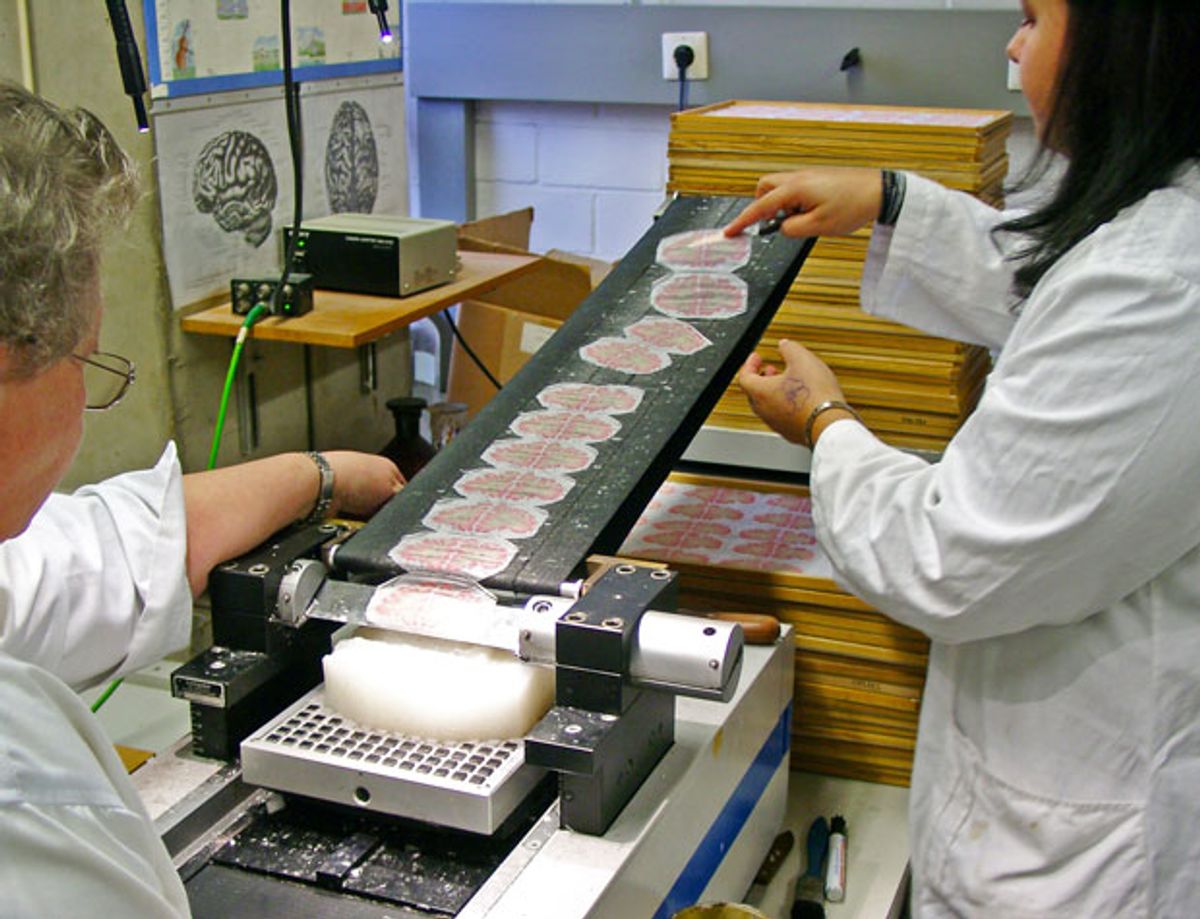For the first time ever a complete 3-D digital map of a post mortem human brain will be available online for neuroscientists and anyone who wants a better idea of what their grey matter really looks like. The new ultra-detailed model, consisting of a terabyte of data, is part of the European Human Brain Project, created in a joint effort by Canadian and German neuroscientists. With a resolution of 20 micrometers it’s the only model yet to go beyond the macroscopic level. At this degree of resolution cells 20 micrometers in diameter are visible. Although individual smaller cells can’t be seen, it’s possible to identify and analyze the distribution of cells into cortical areas and sub-layers. Previous brain mapping efforts had resolutions one-fiftieth as fine.
“The whole point of such a modeling project is that you can then start to simulate what the brain does in normal development in children or in degeneration,” says Dr. Alan Evans, a professor of biomedical engineering at the McGill University, in Montreal. “If you wanted to look to Alzheimer’s Disease, you can examine how that brain might perform computationally in a computational model if you remove certain key structures or key connections.”
Collecting images for the project involved slicing up the brain of a once healthy 65-year-old woman into over 7000 segments, each thinner than a human hair, and then digitizing the findings. This was an especially challenging task, because, once digitized, ruptures created in the slicing process had to be detected and then corrected to develop the final model; a task done both by large amount computer analysis and by manually shifting pieces of data to their proper locations.
The BigBrain is just one of many large-scale brain mapping projects including President Obama’s recently proposed BRAIN Initiative, Paul Allen’s Brain Atlas, and the Human Connectome Project. The BigBrain is the only one to provide a complete map of an individual brain. The Human Connectome Project and BRAIN Initiative focus more on brain activity. The latter will map the connections of small groups of neurons. The former compiles thousands of MRI images from 68 volunteers to map activity, look at how individual brains vary, and see which parts of the brain are involved in specific tasks. Paul Allen’s Brain Atlas focuses more on gene expression in the brain.
Obviously an in depth model of a single post mortem brain can’t really say much about brain activity nor can it account for slight variances in the structures of individual brains, says Dr. Katrin Amunts, a professor of structural functional brain mapping at Aachen University. Think of it as a general model into which data collected from in vivo brains can be put into context.
The project is “a common basis for scientific discussions because everybody can work with this brain model and we speak about the same basic findings and we can develop new methodical aspects based on these common model of the human brain,” says Dr. Karl Zilles, a senior professor at the Jülich-Aachen Research Alliance.
BigBrain pushes the limits of today’s technology, as software doesn’t yet exist to place data from multiple brains into a single model at 20-micrometer resolution. A 1-micrometer model could take up 20 to 22 petabytes of data, an amount that no computer today would be able to process, according to Amunts.
To view the BigBrain follow this link.
Photo: Amunts, Zilles, Evan et al.



